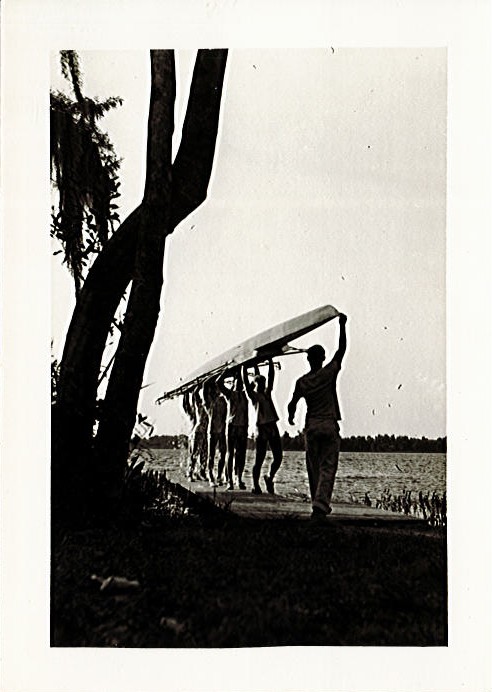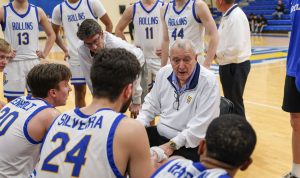
Rowing has played a significant role in Rollins College’s athletic history, evolving through decades of dedication and persistence. From its early years to its notable achievements on the international stage, the program has seen growth, shaped by influential coaches and key moments.
The earliest-known coaching figure in Rollins crew history dates to 1904, when student coach William Robert Burrel (‘1904) guided the team. By 1908, rowing was under the direction of William Branham, a professor of modern languages, who coached through 1909. However, it was in 1933 that crew at Rollins gained Udolpho Theodore Bradley, a professor of history and a former Navy Plebe rower. Bradley brought with him experience from coaching at Pomfret School in Connecticut and was placed in charge of crew activities upon arrival at Rollins.
Bradley quickly became an important figure in the program’s development. In 1936, he introduced intramural rowing—a structured program that allowed students to compete in rowing events within the college, regardless of their experience. This initiative significantly increased the sport’s popularity on campus by giving more students the opportunity to develop their skills and enjoy the sport in a less formal yet competitive environment. That same year, Rollins secured its first intercollegiate victory—an event made more memorable by the revelation that the coxswain, initially disguised as a boy, was female student Sally Stearns. The incident gained national attention when journalist Walter Winchell publicized a story with headlines reading, “Mystery of Rollins Coxswain Cleared as Sally Stearns Admits Handling 1936 Tiller“.
Rollins began competing as an intercollegiate sport in 1931, with its first public appearance occurring on February 28 at the Mount Dora Regatta. This event was historic for Florida, marking the first time a four-oared race in light boats was ever seen in the state. Before this, heavier wooden whaleboats had been commonly used. The appearance of sleeker, more maneuverable light boats marked a significant evolution in the sport. The Rollins Alumni Record recalled “the days when the Rollins Tars were actually ‘Tars’ and used to ply the oars and trim the sails on the three heavy old whaleboats that were donated by the Navy Department,” which later lay abandoned and rotting near the old boathouse for years.

However, World War II brought an interruption to Rollins’ rowing program, with activities suspended from 1943 to 1946. When the sport resumed, it gradually regained momentum, leading to an exceptional 1962-63 season. That year, the crew team broke course records twice and reached the semi-finals at the Henley Royal Regatta on the River Thames in England, marking a great achievement in Rollins rowing history.
Following decades of Bradley’s leadership, Rollins saw another key transition in 1966 when assistant coach Jim Lyden was promoted to head coach. Bradley, who had been recognized as the “Father of Rowing at Rollins,” left a lasting legacy.
Today, Rollins crew continues to build on this legacy. On April 18, the team will compete in the Southern Intercollegiate Rowing Association (SIRA) Regatta in Oak Ridge, Tennessee, a major event that draws college teams from across the country. The regatta serves as an opportunity for the team to test its strength against regional and national competitors.
“I am excited for this regatta because it is the most beautiful course that we race on in our season,” said Rollins rower James Cone (’25). “This regatta means a lot to the guys because SIRA medals are heavily regarded and are only won by some of the best programs. It will be exciting as we have some competitive boats that should pace well.”
With a foundation built on dedication, Rollins crew continues to honor its storied past while moving toward new achievements, incorporating the determination and spirit that have defined the program for generations.







Comments are closed.